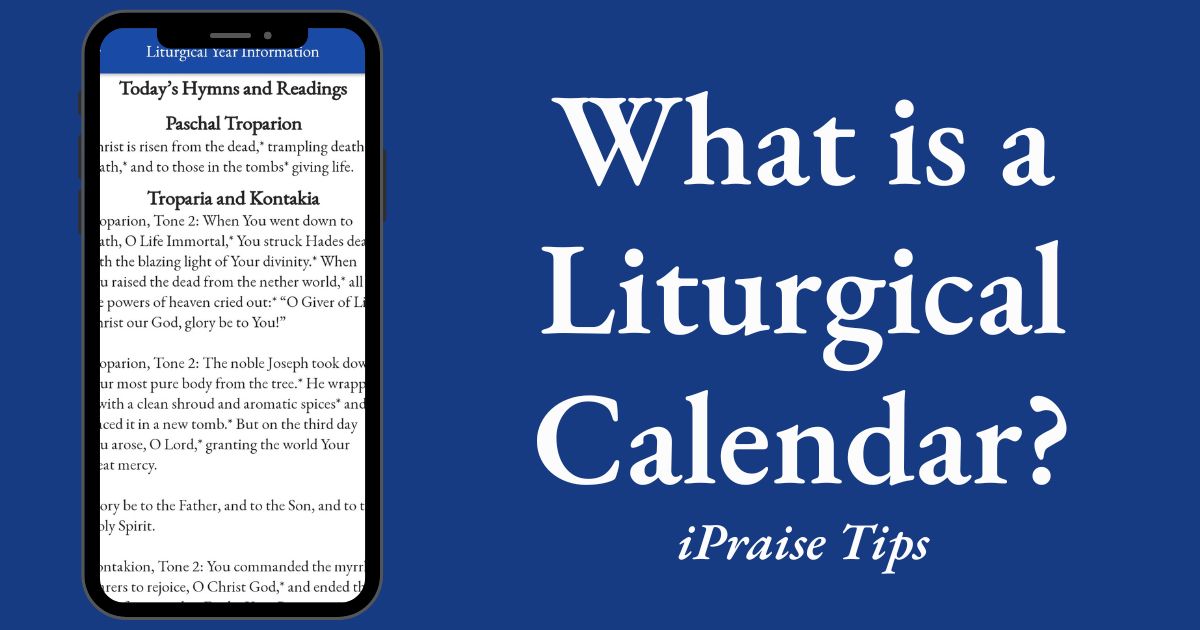What is the liturgical calendar?
A calendar is a way of organizing dates and tracking the passage of time. The liturgical calendar combines several different cycles:
– the days of the week;
– the feasts and saints that fall on different days of the year;
– the feasts and saints that fall on different days of the year;
By singing hymns and reading scriptures from each day in the liturgical calendar, Christians remember and re-experience the story of their salvation.
What is all this information at the beginning of each day?
Here’s an example: Meatfare Sunday (of the Fearful Judgment), Octoechos Tone 3. Our Holy Father Meletius, Archbishop of Antioch (379-95)
The first entry for each day will give different information, depending on the day. This includes:
– the saints of the day, usually with the date they died;
– the feast or festal period (usually called a “pre-feast” or “after-feast”);
– the tone, and sometimes the theme, if it is a Sunday;
– the rank of important feasts, and instructions on days when Ukrainian Catholics are obliged to attend Divine Liturgy;
– instructions about days of fasting and days when no fasting is required;
– directives about when the Divine Liturgy is not celebrated.
The rest of the entry will give the hymns and readings, either for the Divine Liturgy or for another service on that day, when the Divine Liturgy isn’t celebrated.
What is the Troparia and Kontakia?
The troparia and kontakia are hymns. They are sung at the Divine Liturgy and at other services (vespers, matins, etc.) over the course of each day. They describe one or more key aspects of whatever is being commemorated on a given day: the resurrection of the Lord, the holy life and death of a saint, the powerful prayers of the Mother of God, etc. You can use the troparia and kontakia in your personal prayer each day, to stay in sync with the liturgical year.
What is the Prokeimenon?
The prokeimenon is a short verse from the Bible, usually taken from the book of Psalms. When the prokeimenon comes from the Old Testament, it reminds us that Jesus Christ fulfills the promises that God made to Israel. It is often a hymn of praise, and is often chosen because it reminds us of the feast or saint that is being celebrated. For example, the prokeimenon for many feasts of the Mother of God – “My soul magnifies the Lord, and my spirit has rejoiced in God my saviour” – is taken from Mary’s song of praise in Luke 1:46-55.
What is the Epistle?
The epistles are letters written to early Christians by the Apostles and preserved in the New Testament. Every Divine Liturgy includes a reading from an epistle. Sometimes, especially during Easter, the epistle is taken from the Acts of the Apostles, which describes the life of the early Church. On feasts and saint’s days the epistle is chosen from a passage that reflects the mystery being celebrated; on other days the epistles are read more or less continuously, so that most of the New Testament is read over the course of each year.
What is the Gospel and how can we use this?
Every Divine Liturgy includes a reading from one of the four gospels: Matthew, Mark, Luke, and John. Each gospel describes in its own way the life and teaching of Jesus Christ. When the gospel is read, we stand, since the Lord speaks to us in the four gospels. If you can’t attend Divine Liturgy, you can still read the epistle and gospel each day. This will help you know Jesus better: who he is, what he’s done for you, and what he asks you to do in return.
What is the Communion Hymn?
The communion hymn is a short verse from the Bible, usually from the psalms. Like the prokeimenon and alleluia, it relates to the feast, saint, or other occasion being observed. But sometimes it also reminds us that the Lord is about to come to his people in Holy Communion – for example, during the Easter season the communion verse is “Receive the Body of Christ; taste the fountain of immortality.”

